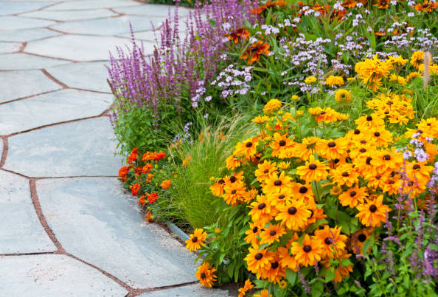
Layered Fall Gardens: How to Mix Annuals + Perennials for Extended Bloom
Share
Layered Fall Gardens: How to Mix Annuals + Perennials for Extended Bloom
As autumn approaches, many gardens begin to fade. But with layered planting, you can keep your yard colorful and vibrant through the entire season. By combining annuals and perennials in the same bed, you create a dynamic garden where blooms overlap, textures blend, and beauty continues long after summer ends.
Why Layered Planting Works
-
Extended bloom time: When perennials begin to fade, fall annuals carry the color forward.
-
Variety and texture: Mixing leaf shapes and flower forms creates depth and contrast.
-
Low maintenance: Hardy perennials come back year after year, while annuals add seasonal bursts.
-
Seasonal flexibility: You can refresh your display each year with new color choices.
Step 1: Build a Perennial Base
Start with dependable perennials that thrive into fall:
-
Coneflower, rudbeckia, sedum, asters, ornamental grasses
-
These plants provide structure, resilience, and long-lasting form
Step 2: Add Fall Annuals for Fresh Color
Tuck annuals between your perennials to keep beds lively:
-
Cosmos, calendula, snapdragons, pansies, chrysanthemums
-
Plant mid-summer to ensure strong autumn blooms
Step 3: Focus on Texture and Contrast
Pair airy grasses with bold blooms, or silver foliage against bright flowers. This interplay makes your garden look fuller and more layered.
Step 4: Care and Maintenance
-
Deadhead annuals to encourage new blooms
-
Leave some perennial seedheads for winter interest
-
Mulch to conserve moisture and control weeds
-
Stake or support taller plants as needed
Layered planting is about flow — one plant fading as another rises, textures overlapping, colors shifting. With the right mix of perennials and annuals, your garden will stay vibrant well into fall, giving you more beauty and less stress.
